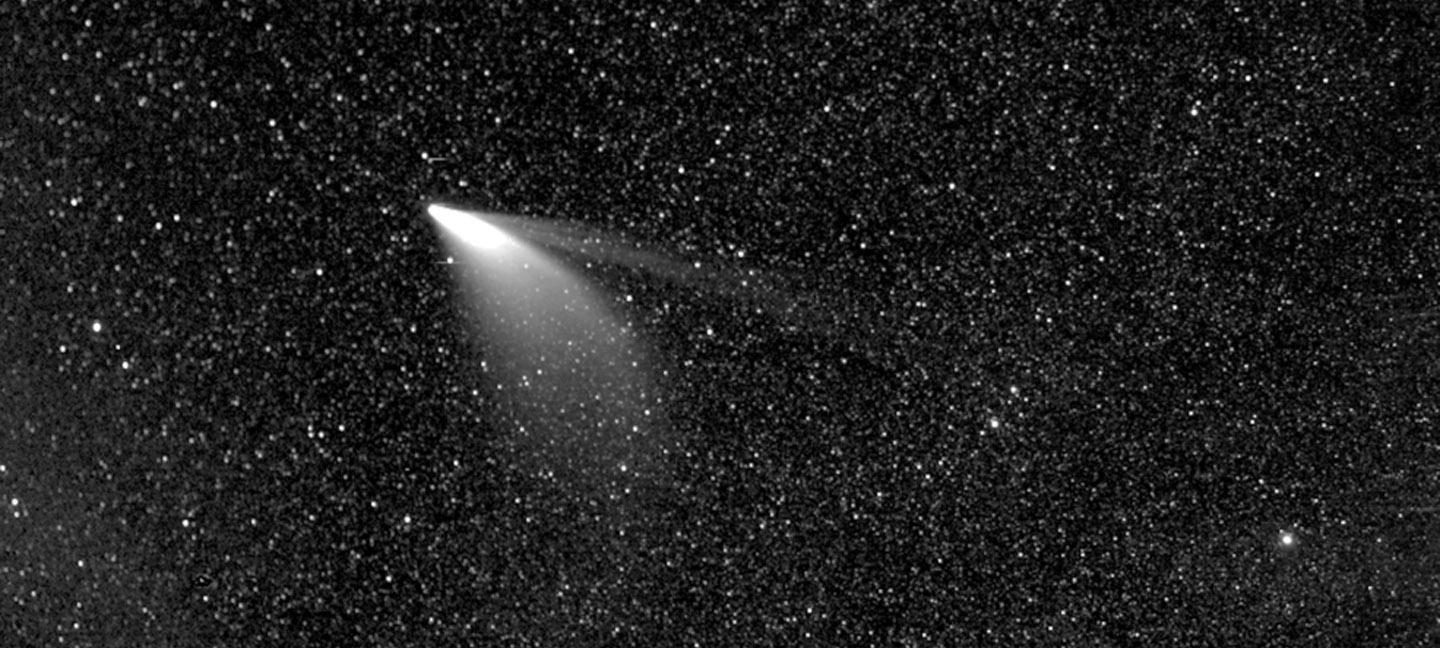News
Parker Solar Probe Spies NEOWISE
Eyes on a Comet
Parker Solar Probe was at the right place at the right time to capture a unique view of comet NEOWISE on July 5, 2020. Parker Solar Probe’s position in space gave the spacecraft an unmatched look of the comet’s twin tails when it was particularly active just after its closest approach to the Sun, called perihelion.
The broad and fuzzy lower “dust” tail is created when dust lifts off the surface of the comet’s nucleus and trails behind the comet in its orbit. The upper “ion” tail is made up of gases that have been ionized by losing electrons in the Sun’s intense light. These ionized gases are buffeted by the solar wind — the Sun’s constant outflow of magnetized material — creating a tail that extends directly away from the Sun.
The comet was discovered by NASA’s Near-Earth Object Wide-field Infrared Survey Explorer, or NEOWISE, on March 27. Since then, the comet — called comet C/2020 F3 NEOWISE and nicknamed comet NEOWISE — has been spotted by several NASA spacecraft, including Parker Solar Probe, NASA’s Solar and Terrestrial Relations Observatory, the ESA/NASA Solar and Heliospheric Observatory and astronauts aboard the International Space Station.
